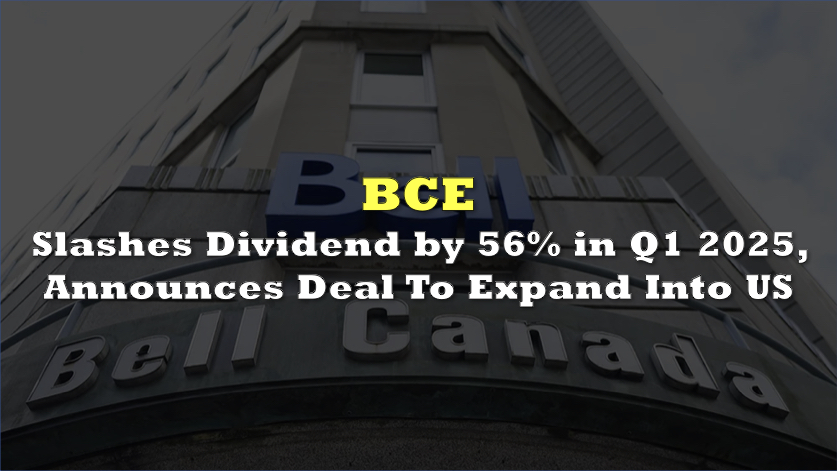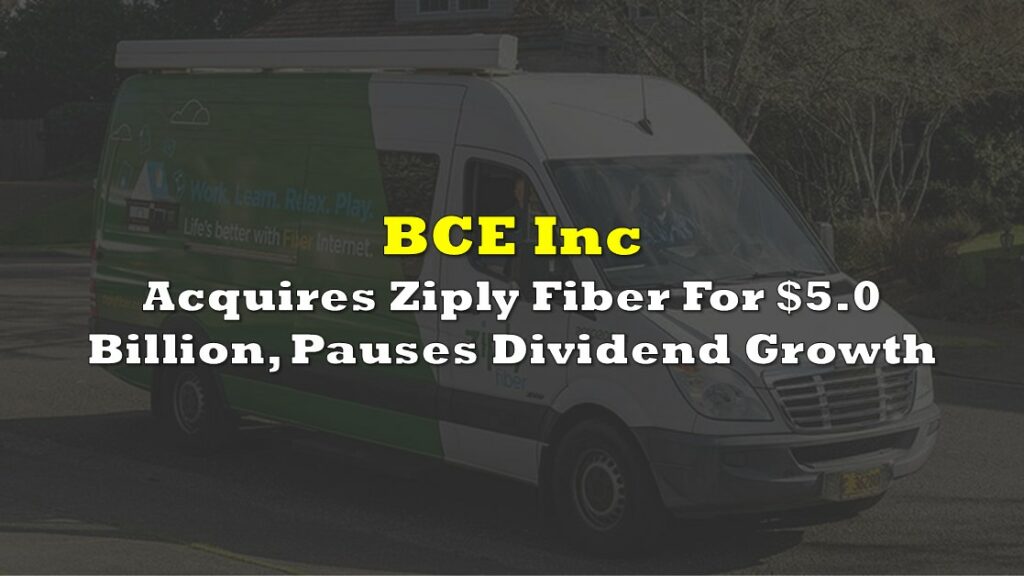BCE (TSX: BCE) reported first quarter 2025 financial results, with operating revenues falling 1.3% YoY to $5.93 billion, down from $6.01 billion in Q1 2024 and also lower than Q4 2024’s $6.44 billion.
Product revenue plummeted 7.4% to $758 million, while service revenue declined 0.4% to $5.17 billion, with Bell Communication and Technology Services acting as the primary drag due to legacy product declines, pricing pressure, and subscriber churn.
Net income jumped 49.5% to $683 million from $457 million a year ago, primarily due to early debt redemption gains. Net earnings attributable to common shareholders climbed to $630 million, or $0.68 per share, a 56.7% and 54.5% increase, respectively. But adjusted net earnings declined 3.2% year-over-year to $633 million, and adjusted EPS dropped 4.2% to $0.69 from $0.72 in Q1 2024.
The adjusted EBITDA figure was also nearly flat, down 0.3% to $2.558 billion. Bell CTS posted a 2.0% decline in adjusted EBITDA, while Bell Media offset some of the decline with a 35.9% increase in EBITDA on strong streaming and advertising growth.
Cash flows from operating activities climbed 38.8% to $1.571 billion, up from $1.132 billion in Q1 2024, primarily due to working capital changes and lower income taxes. But the spike in free cash flow to $798 million—a nearly tenfold increase from $85 million a year ago—resulted from a 27.2% cut in capital expenditures, which dropped to $729 million from $1.00 billion.
Cash on hand dropped to $1.05 billion, down from $1.57 billion, while short-term investments were fully liquidated during the quarter. BCE reported a decline in net debt to $37.66 billion from $40.30 billion at the end of Q4 2024. But long-term debt rose to $33.87 billion from $32.84 billion, while debt due within one year fell to $5.32 billion from $7.67 billion.
The company slashed its annualized common share dividend by a staggering 56% from $3.99 to $1.75, signaling a retreat from its long-held shareholder yield posture.
US Expansion
Against this backdrop of domestic stagnation, BCE has bet big on US fibre broadband as its next growth driver. The company announced a joint venture with Public Sector Pension Investment Board where BCE will hold a 49% equity interest, with PSP taking 51% and pledging over US$1.5 billion in equity. The new entity aims to build up to 8 million fibre passings, focused on underserved US markets via Ziply Fiber.
This deal complements BCE’s previously announced acquisition of Ziply Fiber, expected to close in the second half of 2025, after which BCE will assume full operational control of Ziply’s in-footprint fibre business. Ziply, which posted fibre broadband subscriber and EBITDA growth in 2024, will act as the exclusive service provider.
Critically, Network FiberCo will rely on non-recourse debt to fund the bulk of its buildout, preserving BCE’s core balance sheet while giving it exposure to long-term, inflation-linked returns. BCE expects the venture to be capital-efficient and EBITDA-accretive over time.
BCE reaffirmed its 2025 guidance, with revenue is expected to range between a 3% decline and 1% growth. Adjusted EBITDA may contract by up to 2%, while adjusted EPS is projected to fall between 8% and 13%, pressured by higher interest and amortization expense, increased share count from the discounted dividend reinvestment plan, and the absence of large asset sales. Free cash flow is expected to rise 11% to 19%, aided by a capex pullback that will reduce capital intensity to approximately 14%, down from 16% in 2024.
BCE last traded at $29.38 on the TSX.
Information for this briefing was found via the sources mentioned. The author has no securities or affiliations related to this organization. Not a recommendation to buy or sell. Always do additional research and consult a professional before purchasing a security. The author holds no licenses.









